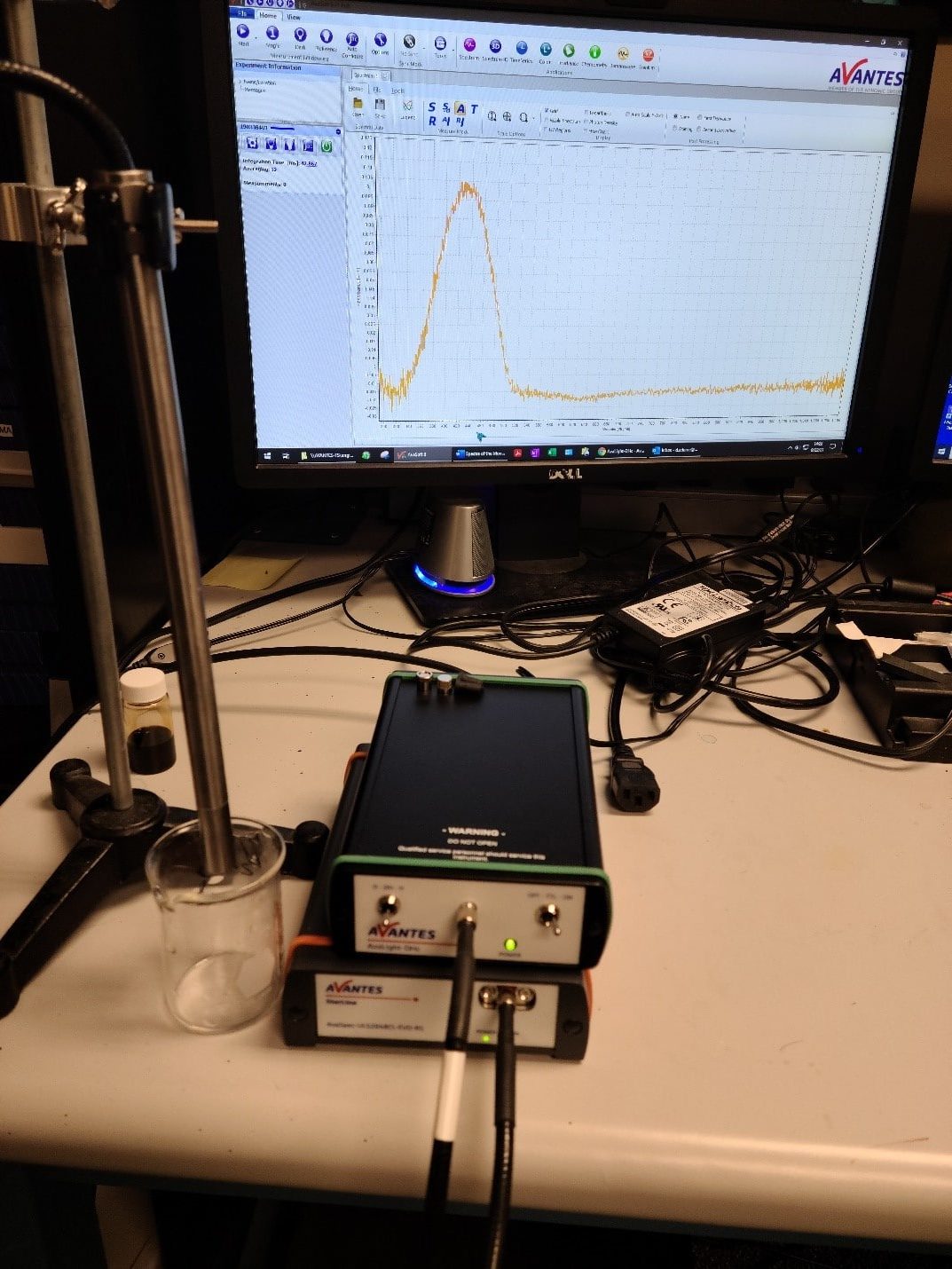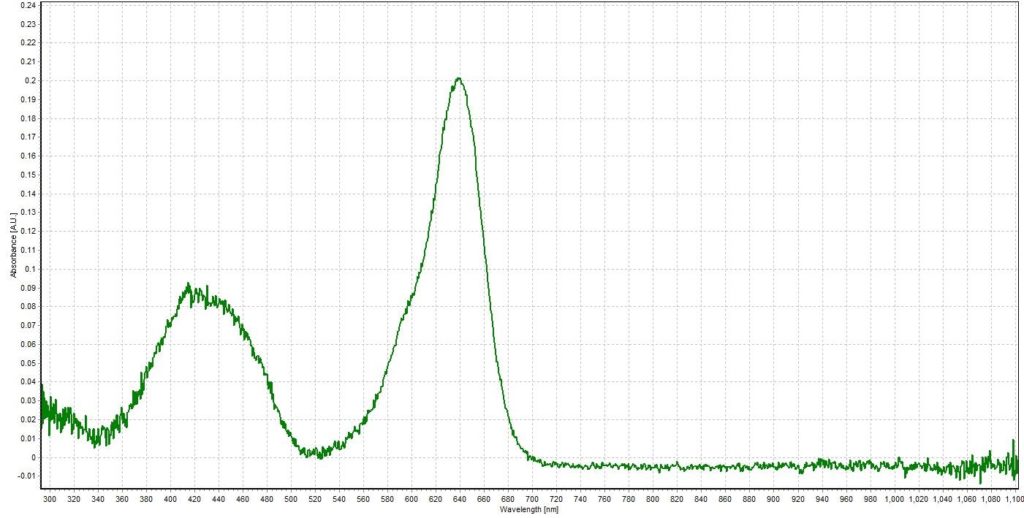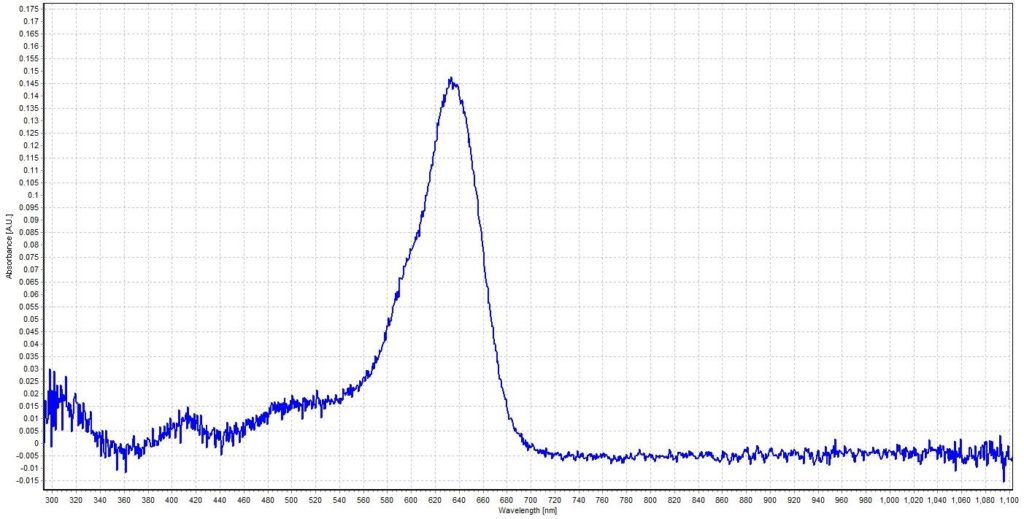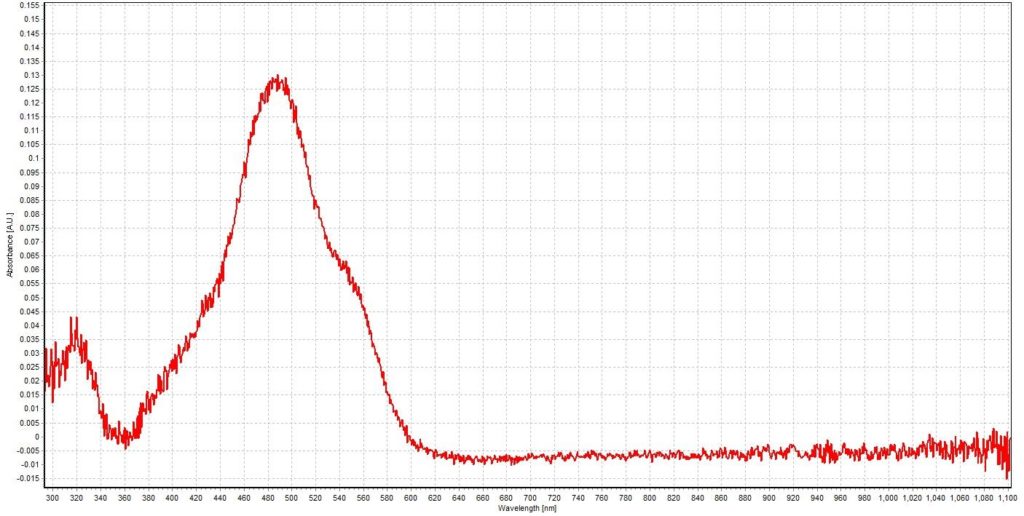Absorbance of Food Colorant using ATR Probe
Conducted by: David Ademe, Avantes Inc.
Theme: Absorbance/ATR Probe
Background/Applications:
Absorbance spectroscopy can bring entirely new perspectives on samples through a wide range of industries. This includes industrial lines, where continually monitoring of water, fluids, and chemicals is necessary to ensure consistent quality and specifications. Many inline control systems use UV/VIS absorbance systems to control quality and ensure process parameters are maintained. A common tool for these types of systems is flow cells and transflectance probes (aka dip probes) where an optical path length is used to measure light absorbed and transmitted by a liquid sample. A common challenge with this type of optical sampling is the reality that most of these types of systems cannot measure highly absorptive samples. Samples with absorbance unit values above 4 often preclude the use of traditional UV/VIS absorbance measurements. A means of overcoming this limitation is through the use of attenuated total reflectance (ATR).
ATR uses the property of total internal reflection through a crystal resulting in an evanescent wave. A beam of visible or near-infrared light is passed through the ATR crystal in such a way that it reflects several times off the internal surface in contact with the sample. This reflection forms the evanescent wave which extends into the sample medium which may be a liquid, slurry or solid. The penetration depth into the sample is typically between 0.5 and 2 microns, with the exact penetration value being a function of the wavelength of light, the angle of incidence, and the indices of refraction for the ATR crystal and the medium being measured. As the beam exits the crystal it is collected by a spectrometer.
ATR is an ideal technique for measuring high concentration samples such as inks, dyes, or dark solid samples such as coal, sludge, etc.
Avantes USA is now offering an attenuated total reflectance (ATR) probe option which easily couples with our line of AvaSpec spectrometers to facilitate measurements of high absorbance (optical density samples). The AvaPRB-ATR-Z attenuated total reflectance probe is primarily suited to liquid measurements. The probe’s robust design is suited for flange mounting inside reaction vessels. In this Spectra of the Month, Avantes USA used the AvaPRB-ATR-Z to demonstrate this powerful technique.
 Description of System:
Description of System:
For this experiment, we used an AvaSpec-ULS2048CL-EVO spectrometer, coupled with an AvaLight-DHc light source and the AvaPRB-ATR-Z probe.
The AvaSpec-ULS2048CL-EVO offers the latest technology, including a CMOS detector, making it a spectrometer platform that will last for many years. In combination with the latest AS-7010 electronics, the AvaSpec-ULS2048CL-EVO is a versatile device including USB3 communication with 10 times higher speed compared to USB2, and a Gigabit Ethernet port for long-distance communication. Besides the high-speed communication options, the EVO series spectrometers also offer a fast microprocessor and 50 times more memory capacity, which can facilitate saving up to 35,000 spectra onboard the spectrometer. The onboard USB3.0 communication also facilitates 0.38 ms/spectra data transfer times. Options for this instrument include a detector collection lens to enhance sensitivity in the 200-1100 nm range and an order-sorting filter to reduce second-order effects. Furthermore, the AvaSpec-2048CL-EVO is available with a wide range of slit sizes, gratings, and fiber-optic entrance connectors. One popular feature of this instrument is the optional replaceable slit feature which allows for end-users to easily replace the slit of the spectrometer such that it can influence resolution or sensitivity. This spectrometer line can be utilized in a wide range of industries thanks to the many unique configurations that are possible.
For our light source in this experiment, the AvaLight-DHc provides an excellent, broad-spectrum by combining deuterium and halogen into a single bulb. This provides the user with adequate light between 200 and 2500 nm for nearly all absorbance chemistry applications. Deuterium emits light between 200 and 550 nm, whereas halogen emits light of up to 2500 nm. The user also has the capability to toggle between using deuterium or halogen only and provide for an internal shutter which can be activated via a TTL pulse from any Avantes spectrometer or turn on/off manually. This light source is an excellent option for applications that require the evaluation of a broad spectrum, from the UV region all the way out to the NIR spectrum.
Description of Methodology:
For this experiment, we utilized the absorbance module in AvaSoft. The absorbance module uses a reference and dark spectrum to measure what wavelengths are being absorbed by the sample. For ATR sampling either air or a reference solvent (water, ethanol, etc) can be used for a reference. After the reference and dark spectrums are collected, the ATR probe is submerged in our food coloring samples. For this experiment, recorded the absorbance spectra of green, blue, red, and yellow food coloring (Figure 2).
Figure 2: Food colorant samples

Typically measurements of food colorants, inks, or dyes require significant dilution down to 10% or lower solutions. For this experiment, the food colorants are measured directly out of the bottle with no dilution.
Test Data and Results:
Measurement results are depicted in figures 3-6
Analysis:
The undiluted food coloring provided an excellent example to prove the effectiveness of an ATR probe in measuring the absorbance values of dense and highly absorbent samples. Had these samples been measured with a dip probe, cuvette or flow cell, the spectrometer system would have registered noise with absolutely no discernible spectra. Due to the power of the ATR technique, these samples can be measured easily and accurately. These results demonstrate how an ATR probe can be used to consistently measure the color spectrum of inks dyes and other colorants in real time. A near-infrared configuration of the same probe can be used for applications in the 1000-2500 nm range.
Conclusion:
The spectra from the ATR probe, in combination with an AvaLight-DHc and AvaSpec-ULS2048CL-EVO proves that this system is well suited for a wide range of applications and industries, including those that measuring the absorbance values precisely is critical. Please contact your Avantes sales engineer for more information on how this equipment can aid you in your application
 My Cart
My Cart 



